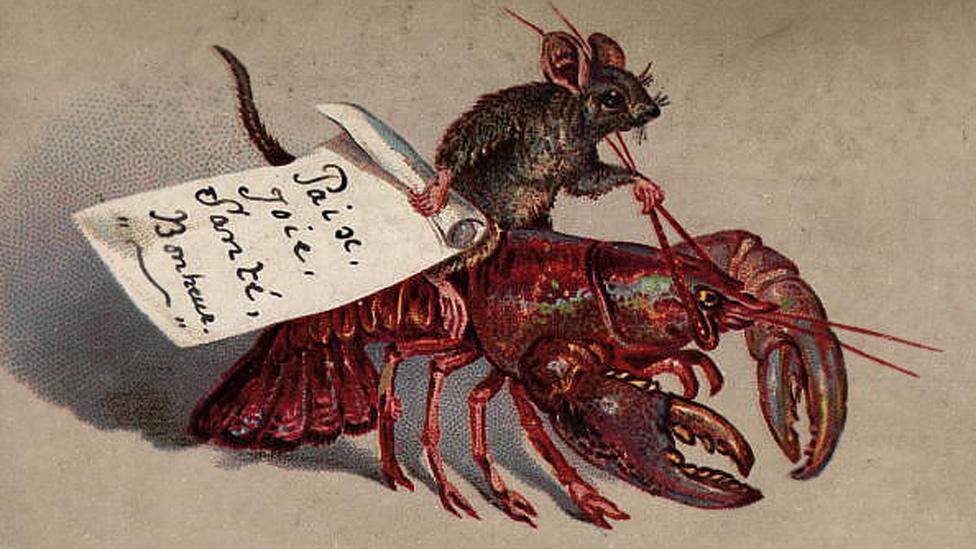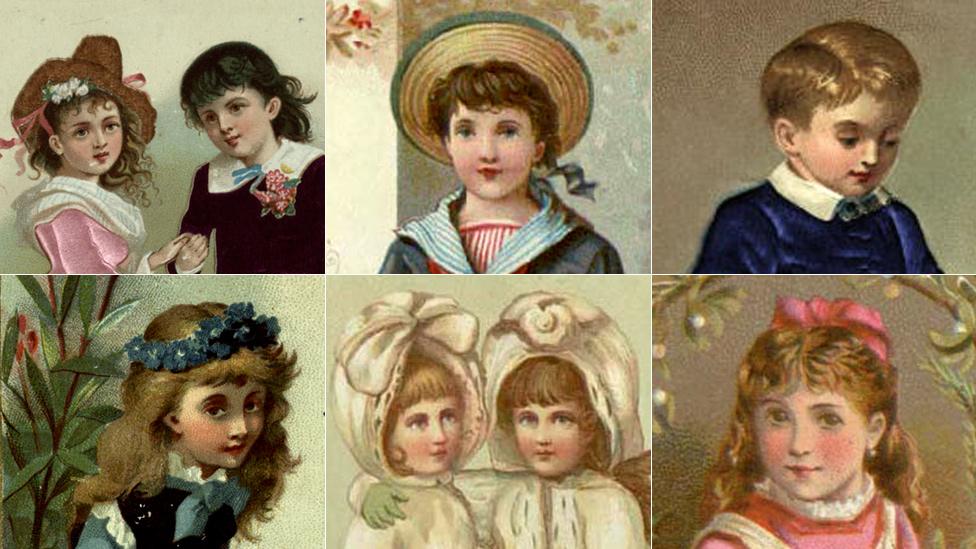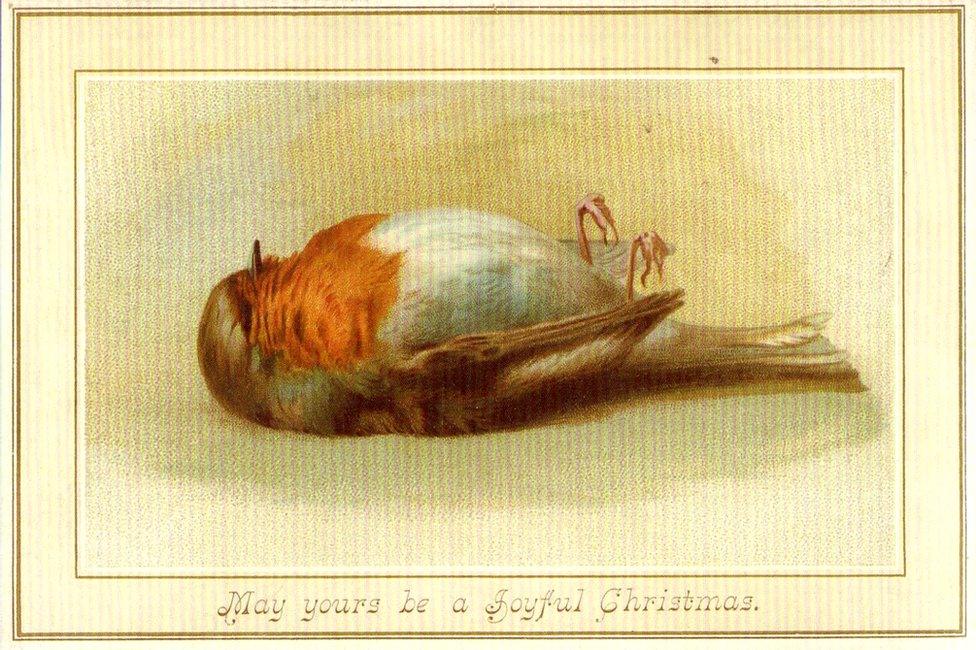Frog murder and boiled children: 'Merry Christmas' Victorian style
- Published

Back when snowmen were the stuff of nightmares
Murderous frogs, children boiled in teapots and a mouse riding a lobster are generally not images seen today on Christmas cards. But in Victorian times it was all par for the course. BBC News takes a look at some of the more unusual cards of Christmas past.

Because nothing says Merry Christmas quite like a mouse riding a lobster
The first Christmas card was commercially produced by Sir Henry Cole in 1843 but it was not until the 1870s, and the introduction of the halfpenny stamp, that sending cards was affordable for almost everyone. Victorians then leapt upon the idea with alacrity.
It was usual in the 19th Century for friends and relations to exchange letters at Christmas time, according to the Library of Birmingham, which has a collection of Victorian scrapbooks, external containing Christmas cards.
They would tell of the year's events and their wishes for the coming year.

'Tis the season for frog-on-frog murder

The ever-popular traditional Christmas scene of a monkey painting a portrait of a dog while another monkey lurks menacingly in the background

"Wishing you a glad New Year", the disembodied dog's head said
As Stephanie Boydell, curator of special collections at Manchester Metropolitan University explains, the cards were "cheap and cheerful, leading to a real fad" of sending greetings in such a way.
"There was a huge amount of material, publishers would produce loads and loads. Popular images were reused and reprinted as Christmas cards, even if they weren't particularly festive," Ms Boydell said.

Why the long face? A glum-looking horse wishes the recipient a "jovial Christmas" while a seemingly tearful kitten proclaims: "Dear friend! Accept my best wishes for the season!"

With sadness in their eyes... these faces from Victorian Christmas cards run the gamut of emotions from resigned to desolate to knowing

"May yours be a joyful Christmas" - unlike the dead robin's
The cards were not only overwhelmingly secular, but some were grimly non-festive. Rosy-faced children gathered round a decorated tree might be seen on a card - but so might a dead robin or a turnip wearing a hat.
Food features a lot - not just in family feasts and traditional spreads. One card shows a group of rats, nattily dressed, sharpening knives and settling down to a nice meal of roast cat. A sinister Christmas pudding leaps out of a pot to startle a cook with a woman's body and a bird's head.

A winged toddler torments a glum snowman, a wild-eyed Santa cavorts with strange men-children and a young toff threatens a smaller boy with a whip

What could be more seasonal than a child boiled in a teapot? Perhaps a malevolent clown about to assault a policeman with a red hot poker

All a dog wants for Christmas is a gun, while a frog and a beetle enjoy a festive dance. Christmas is a time for mirth, the card on the right reminds us. This merriment is expressed by two ladies rolling an elderly man in snow
So why were such odd things depicted?
"They're only odd to our eyes," Ms Boydell says.
"The Victorians had a different idea to what Christmas was about - not particularly Christian, but a time of good humour. You may find a mouse riding a lobster strange - I find it funny. It's horses for courses."
Of course, there were also cards more like the ones we post today - with frosty scenes, Father Christmas and family get-togethers.
"For all the more unusual ones, there were probably 1,001 entirely Christmassy ones. It's just the unusual ones which stand out."
And stand out they certainly do. Merry Christmas - and don't have nightmares.

"Dear Santa. Please don't visit. You are terrifying, and so is your doll." A maniacal Christmas pudding with wine-bottle legs offers a seasonal greeting, as does a pig with lady-hands and some opera glasses. Of course
- Published14 February 2015
